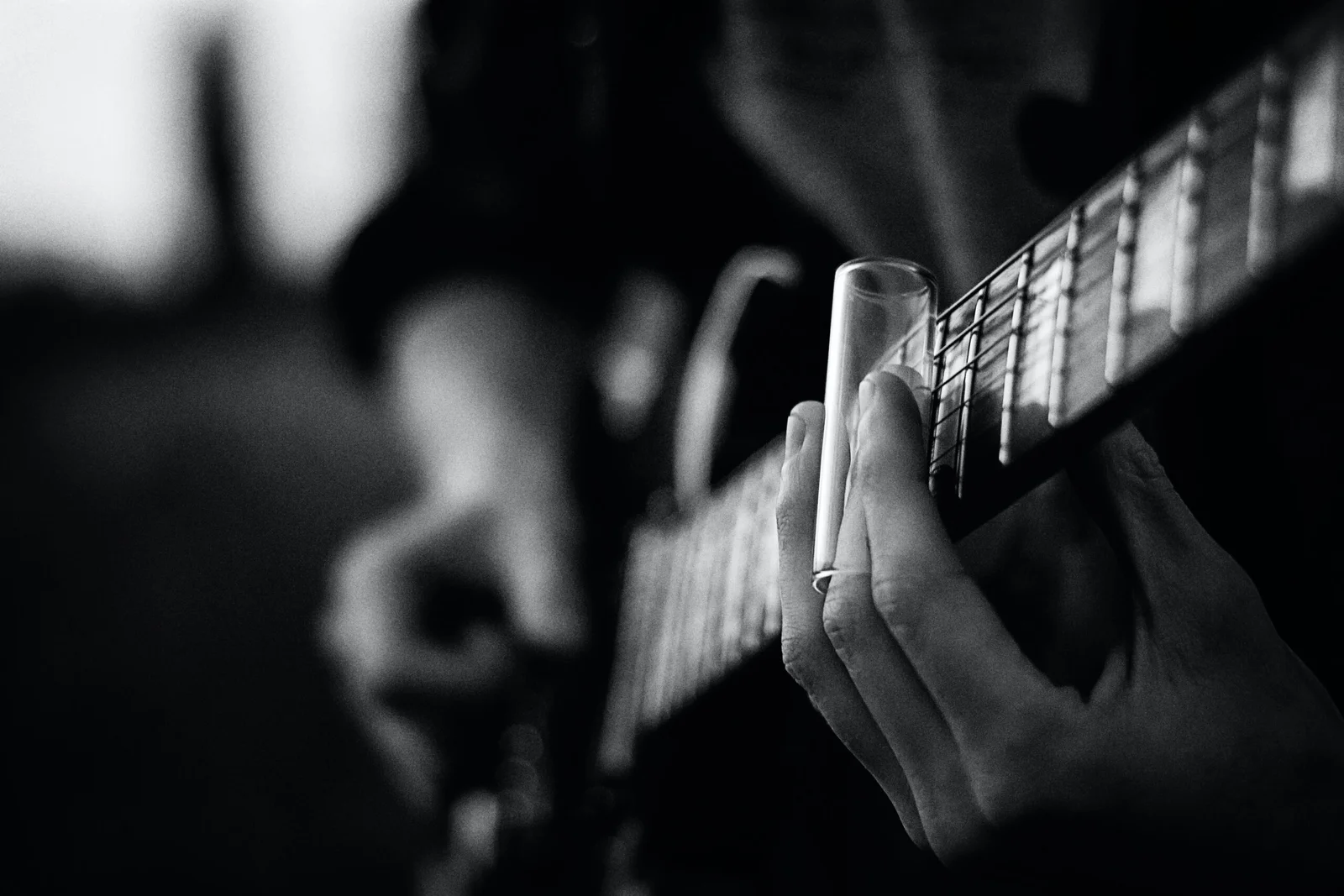Slide guitar offers a unique approach to playing the instrument. It introduces a distinctive sound and technique that sets it apart from regular guitar playing. Here’s an in-depth exploration of what makes slide guitar different.
Content Navigation
A Unique Tool
The slide is the central tool in slide guitar playing. It is a smooth, hard object, often made from materials such as glass, metal, or ceramic. This tool gets worn on one of the fingers of the fretting hand, typically the ring or pinky finger.
The slide allows the player to glide smoothly over the strings, producing a continuous, fluid sound that is distinct from the clear, separate notes produced in regular guitar playing.
Types of Slides
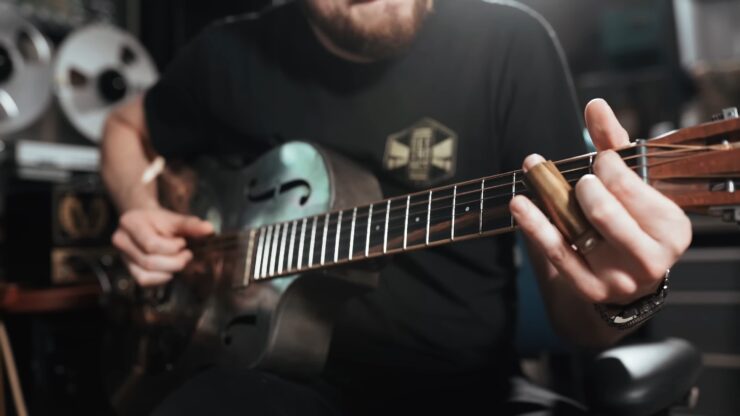
- Glass Slides: Offer a smooth, warm tone. They are often preferred for their lighter weight and softer sound.
- Metal Slides: Produce a brighter, more cutting sound. They are heavier and can sustain notes longer.
- Ceramic Slides: Provide a balance between glass and metal slides, offering both warmth and sustain.
Playing Technique
The technique of playing slide guitar differs significantly from regular guitar playing. Instead of pressing the strings down onto the fretboard, the slide is glided across the strings. This technique allows for smooth transitions between notes, creating a wailing, expressive sound that is a hallmark of slide guitar.
Control and Precision
Playing slide guitar requires a high level of control and precision. The slide must be placed lightly on the strings, just enough to make contact without pressing down too hard. This creates a unique challenge, as it requires the player to develop a delicate touch.
Tuning Adjustments
Slide guitar often involves the use of open tunings. Open tunings mean that the strings are tuned to form a chord when played open. This makes it easier to play chords and melodies with a slide, as the player can simply move the slide up and down the neck.
Common Open Tunings
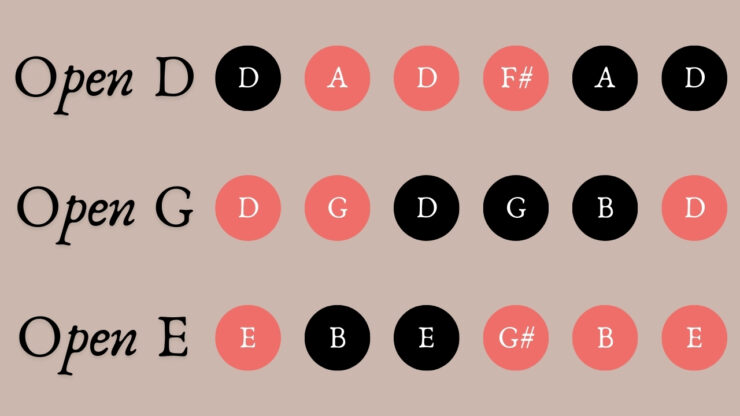
- Open D (D-A-D-F#-A-D): Popular for its rich, resonant sound.
- Open G (D-G-D-G-B-D): Frequently used in blues and rock music.
- Open E (E-B-E-G#-B-E): Provides a bright, vibrant tone.
Regular guitar playing typically uses standard tuning (E-A-D-G-B-E), although alternate tunings are also used for specific songs or styles.
Higher String Action
The action of a guitar refers to the height of the strings above the fretboard. Slide guitars usually require higher action. This prevents the slide from hitting the frets and allows for smooth movement across the strings. Regular guitars often have lower action to facilitate easier playability and faster finger movements.
Adjusting Action for Slide Guitar
Higher action can make a guitar more difficult to play in a conventional manner, but it is essential for slide guitar. Players often dedicate specific guitars for slide playing, adjusting the action to suit the needs of the slide technique.
Musical Genres
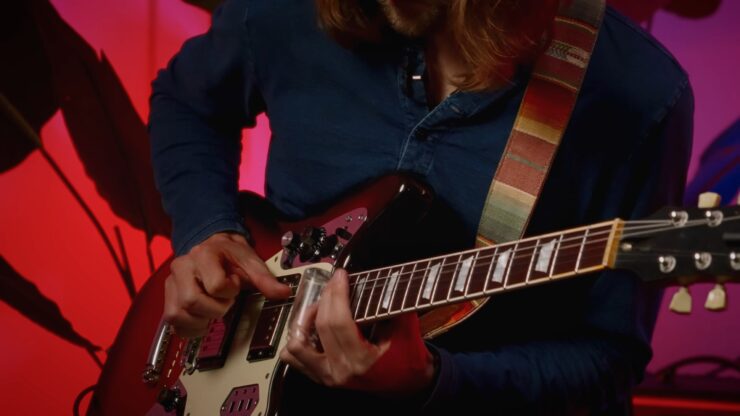
Slide guitar has a strong presence in certain musical genres. Blues, country, and Hawaiian music often feature slide guitar prominently. The technique adds a distinctive sound that enhances these styles of music.
Blues
Slide guitar is a cornerstone of blues music. It adds a soulful, expressive quality that is essential to the genre. The fluid motion of the slide allows for expressive bends and vibratos that define the blues sound.
Country
In country music, slide guitar provides a twangy, resonant sound that complements the genre’s style. It is often used in both traditional and modern country songs, adding a unique flavor to the music.
The Sound
The sound of a slide guitar is unmistakable. It is smooth, expressive, and soulful. The slide allows for bending notes in a way that fingers cannot achieve, creating a singing quality in the music. This differs greatly from regular guitar playing, which produces clear, distinct notes.
Sound Characteristics
- Expressive Vibrato: The slide allows for wide, expressive vibratos that add emotion to the music.
- Smooth Transitions: Sliding between notes creates a continuous flow, unlike the discrete notes in regular guitar playing.
- Unique Tones: Different materials and techniques produce a variety of tones, from warm and mellow to bright and cutting.
Guitar Setup
Slide guitarists often dedicate specific guitars for slide playing. These guitars have a different setup, including higher action and specific tunings, to enhance the slide-playing experience.
Dedicated Slide Guitars
- Resonator Guitars: Often used for slide playing due to their loud, distinctive sound.
- Electric Guitars: Some players prefer electric guitars for slides due to their sustain and tonal variety.
- Acoustic Guitars: Acoustics offer a rich, resonant sound that complements slide playing.
Finger Placement
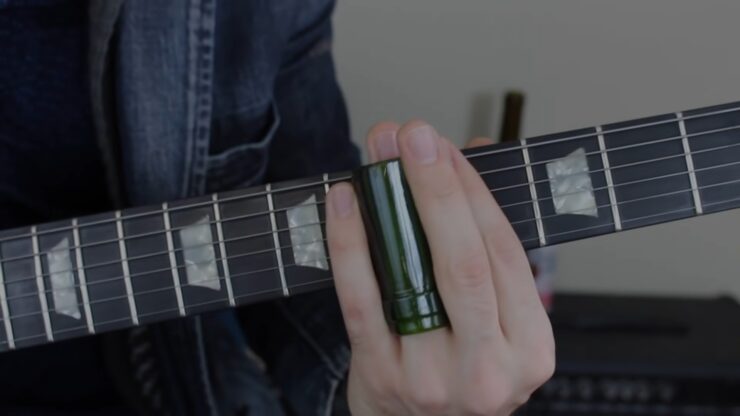
In slide guitar, the slide replaces traditional finger placement. Instead of pressing down on the strings, you glide the slide across them. This changes the approach to playing notes and chords significantly.
- Light Touch: The slide should barely touch the strings, creating a need for precise control.
- Finger Muting: To prevent unwanted string noise, players often use their other fingers to mute the strings behind the slide.
More About the Learning Process
Learning slide guitar involves a different set of challenges compared to regular guitar playing. It requires control and precision with the slide, as well as an understanding of open tunings and higher action.
Challenges
- Developing Control: The light touch needed for slide playing takes practice to master.
- Adapting to Higher Action: Adjusting to the higher action of slide guitars can be difficult for players used to lower action.
- Understanding Open Tunings: Familiarizing oneself with open tunings and their chord shapes is essential for slide playing.
Expression and Emotion
Slide guitar allows for a high level of expression. The fluid motion of the slide can convey deep emotion, adding a soulful quality to the music. Regular guitar playing also allows for expression, but the techniques differ.
- Soulful Melodies: The smooth transitions and expressive vibratos of slide guitar create deeply emotional music.
- Personal Style: Players can develop a unique voice with the slide, showcasing their individual style.
Historical Influence
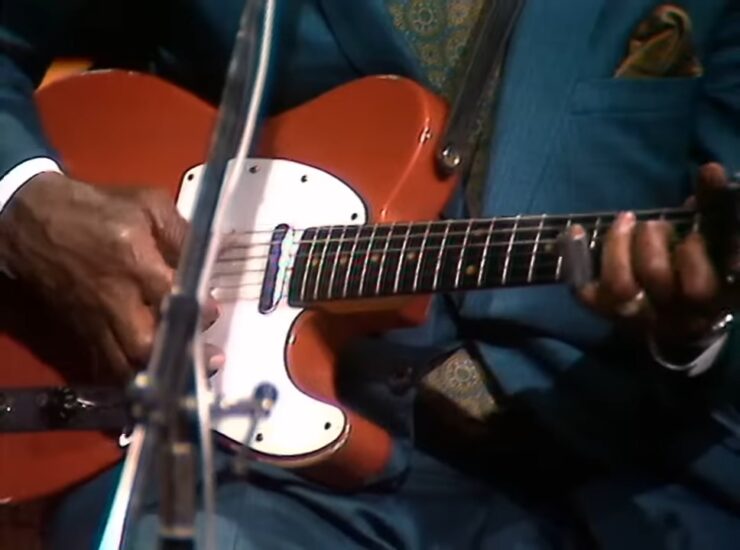
Icons like Robert Johnson and Muddy Waters have shaped the sound of slide guitar.
Players like Hank Williams have brought slide guitar into the country music spotlight.
Performance Techniques
Slide guitar performance techniques differ significantly. You might play in an upright position or on your lap. The slide can be used on different fingers, each offering a unique approach.
- Lap Steel: Played on the lap, often with a metal bar slide.
- Dobro: A resonator guitar played with a slide, known for its loud, distinct sound.
Improvisation
Improvisation plays a big role in slide guitar. The fluid nature of the slide allows for spontaneous creativity. This is a key element in blues music.
Creative Freedom
- On-the-Spot Melodies: The slide allows for easy improvisation of melodies and solos.
- Expressive Bends: Wide, expressive bends are possible, adding to the improvisational style.
Influence of Pioneers
Slide guitar has been shaped by influential players. Icons like Robert Johnson and Duane Allman have left a lasting legacy. Their innovative use of the slide has inspired countless musicians.
- Robert Johnson: Known for his pioneering blues slide guitar work.
- Duane Allman: Famous for his work with The Allman Brothers Band, bringing slide guitar into rock music.
Variations
There are variations of slide guitars, such as the lap steel guitar and the dobro. These instruments are designed specifically for slide playing, offering unique sounds and playing experiences.
Unique Instruments
- Lap Steel Guitars: Played horizontally on the lap, using a slide to create a distinctive sound.
- Dobros: Resonator guitars that produce a loud, metallic tone, often used in bluegrass and country music.
Slide Materials
The material of the slide affects the sound. Glass slides are smooth and mellow. Metal slides are bright and cutting. Ceramic slides offer a balance between the two. Choosing the right slide material can shape your sound.
- Glass: Smooth, warm tone; lightweight.
- Metal: Bright, cutting sound; heavier with longer sustain.
- Ceramic: Balanced tone; offers a mix of warmth and sustain.
Influence on Modern Music
Slide guitar continues to influence modern music. It appears in various genres beyond blues and country. Rock and pop artists have incorporated slide techniques into their music.
- Rock Music: Bands like The Rolling Stones and Led Zeppelin have used slide guitar in their songs.
- Pop Music: Artists like John Mayer have incorporated slide guitar into their modern pop sound.
Adapting Techniques
Adapting to slide guitar requires a shift in technique. You need to develop control and precision with the slide. This involves a different muscle memory compared to regular guitar playing.
Required Skills
- Light Touch: Developing a light touch to glide the slide smoothly.
- Muting Techniques: Using fingers to mute unwanted string noise.
Overall Impact on Music
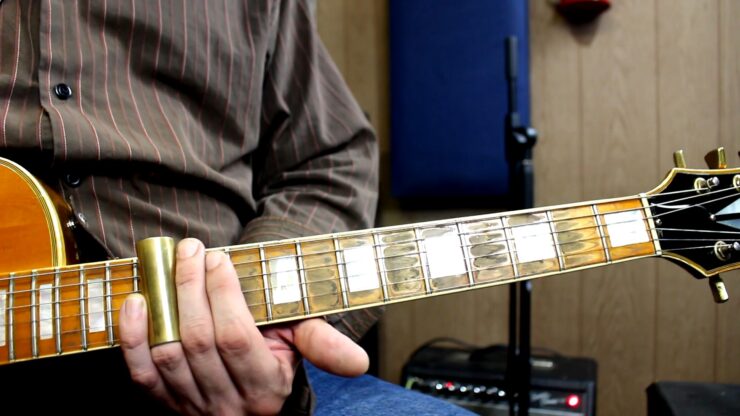
Slide guitar can influence your understanding of music theory. The use of open tunings changes the way you approach chords and scales. This can provide a new perspective on the instrument.
Musical Insights
- Chord Shapes: Open tunings simplify chord shapes, making them more accessible.
- Scale Patterns: Slide playing introduces new ways to think about scales and note transitions.
Community and Tradition
Slide guitar has a strong sense of community and tradition. It’s a technique passed down through generations of musicians, creating a rich cultural heritage.
Tradition and Legacy
- Passing Down Knowledge: The technique and styles of slide guitars are often taught through generations.
- Cultural Significance: Slide guitar holds a significant place in the history of blues and country music.
Conclusion
Slide guitar stands apart from regular guitar playing in many ways. The use of a slide, different playing techniques, open tunings, and a unique sound all contribute to its distinctiveness. Slide guitar offers a rich, expressive, and soulful way to play, deeply rooted in musical tradition and innovation.
Whether you’re a beginner or an experienced guitarist, exploring slide guitar can open up new dimensions of musical expression and creativity.

